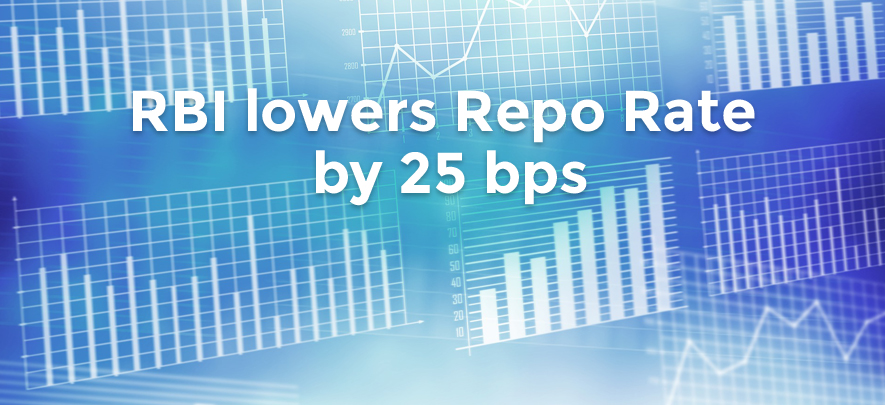RBI lowers repo rate by 25 bps in first cut since August 2017

Economy
318 week ago — 2 min read
The Reserve Bank of India (RBI) in its bi-monthly monetary policy today, reduced the repo rate by 25 basis points under the liquidity adjustment facility (LAF). The new repo rate stands at 6.25% from the earlier 6.50%.
Repo rate is the rate at which national banks borrow money from the RBI in case of shortage of funds. The RBI uses repo rate to determine or regulate the rate of money supply, level of inflation and liquidity in our country. High levels of inflation mean a cut in money supply for the country.
The average of India’s consumer inflation is at 3% since the last five months against RBI’s parliament-mandated target of 4% and hence, the Reserve Bank of India's Monetary Policy Committee (MPC), which decides on repo rates, said that the decision was taken with the objective of achieving a consumer price index (CPI) inflation of the targeted 4%.
In a unanimous decision taken by the MPC, it decided to change its policy from calibrated tightening to neutral. A 'calibrated tightening' stance means that the likelihood of a cut in the repo rate is unexpected.
The MPC also decided to adjust the reverse repo rate (the interest rate at which banks lend money to the RBI) to 6%, and the marginal standing facility (MSF) rate and the bank rate to 6.5%.
The last cut in repo rates was in August 2017. RBI kept the rates unchanged in the last two monetary policy announcements held in October and December 2018 and hiked the rates twice in June and August 2018. The rates were increased by 25 bps both times.
The drop in repo rate will mean that bank EMIs (Equated monthly installments) will become cheaper and there will be a boost in economic growth.
Posted by
GlobalLinker StaffWe are a team of experienced industry professionals committed to sharing our knowledge and skills with small & medium enterprises.
View GlobalLinker 's profile
Most read this week













Comments
Share this content
Please login or Register to join the discussion